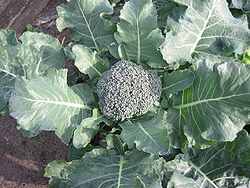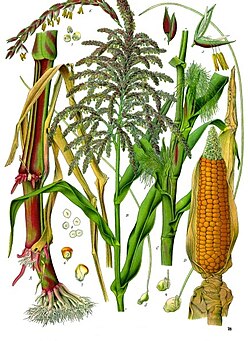This article needs additional citations for verification .(June 2025) |
| Agriculture |
|---|
 |
| |
This is a list of food items by the region of the world they originate or were domesticated in.
Contents
- Items common to most regions
- Vegetables
- Fruits
- Meats
- Seeds/Nuts
- Herbs/Spices
- Other
- Africa
- East Africa
- Grains/Cereals
- Vegetables 2
- Fruits 2
- Seeds/Nuts 2
- Other 2
- West Africa
- Grains/Cereals 2
- Vegetables 3
- Fruits 3
- Meats 2
- Seeds/Nuts 3
- Other 3
- Asia
- East and Southeast Asia
- Grains/Cereals 3
- Vegetables 4
- Fruits 4
- Meats 3
- Seeds/Nuts 4
- Herbs/Spices 2
- Other 4
- Southern Asia or Indian Subcontinent
- Grains/Cereals 4
- Vegetables 5
- Fruits 5
- Herbs/Spices 3
- Other 5
- Western Asia or Middle East
- Grains/Cereals 5
- Vegetables 6
- Fruits 6
- Meats 4
- Seeds/Nuts 5
- Herbs/Spices 4
- Oceania
- Australia
- Vegetables 7
- Fruits 7
- Seeds/Nuts 6
- Meats 5
- Other 6
- Austranesia and New Guinea
- Grains/Cereals 6
- Vegetables 8
- Fruits 8
- Meats 6
- Seeds/Nuts 7
- Herbs/Spices 5
- Other 7
- Europe
- Northern Europe
- Grains/Cereals 7
- Vegetables 9
- Fruits 9
- Meats 7
- Seeds/Nuts 8
- Herbs/Spices 6
- Southern Europe or Mediterranean
- Vegetables 10
- Fruits 10
- Herbs/Spices 7
- Americas
- North America
- Grains/Cereals 8
- Vegetables 11
- Fruits 11
- Meats 8
- Seeds/Nuts 9
- Herbs/Spices 8
- Other 8
- Central America and Caribbean
- Grains/Cereals 9
- Vegetables 12
- Fruits 12
- Herbs/Spices 9
- Other 9
- South America
- Grains/Cereals 10
- Vegetables 13
- Fruits 13
- Meats 9
- Seeds/Nuts 10
- Herbs/Spices 10
- Other 10
- See also
- References






















